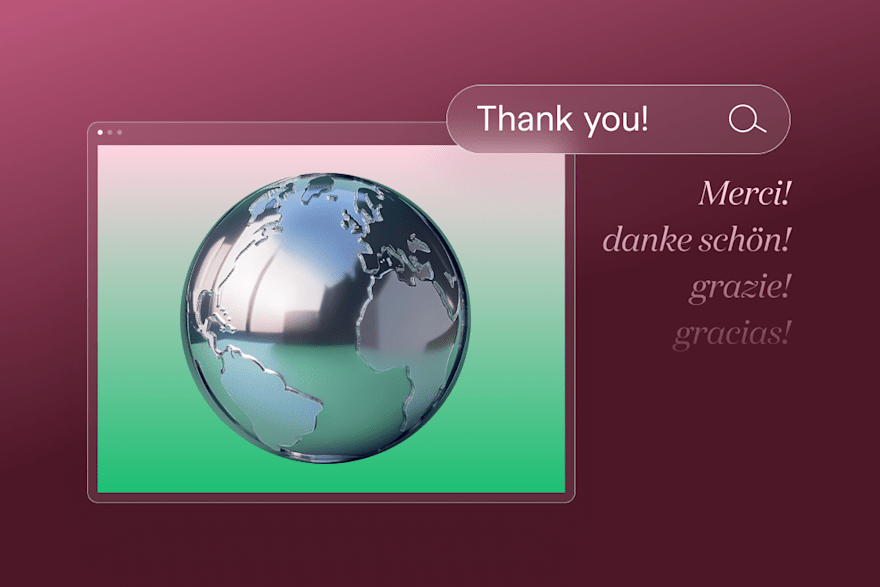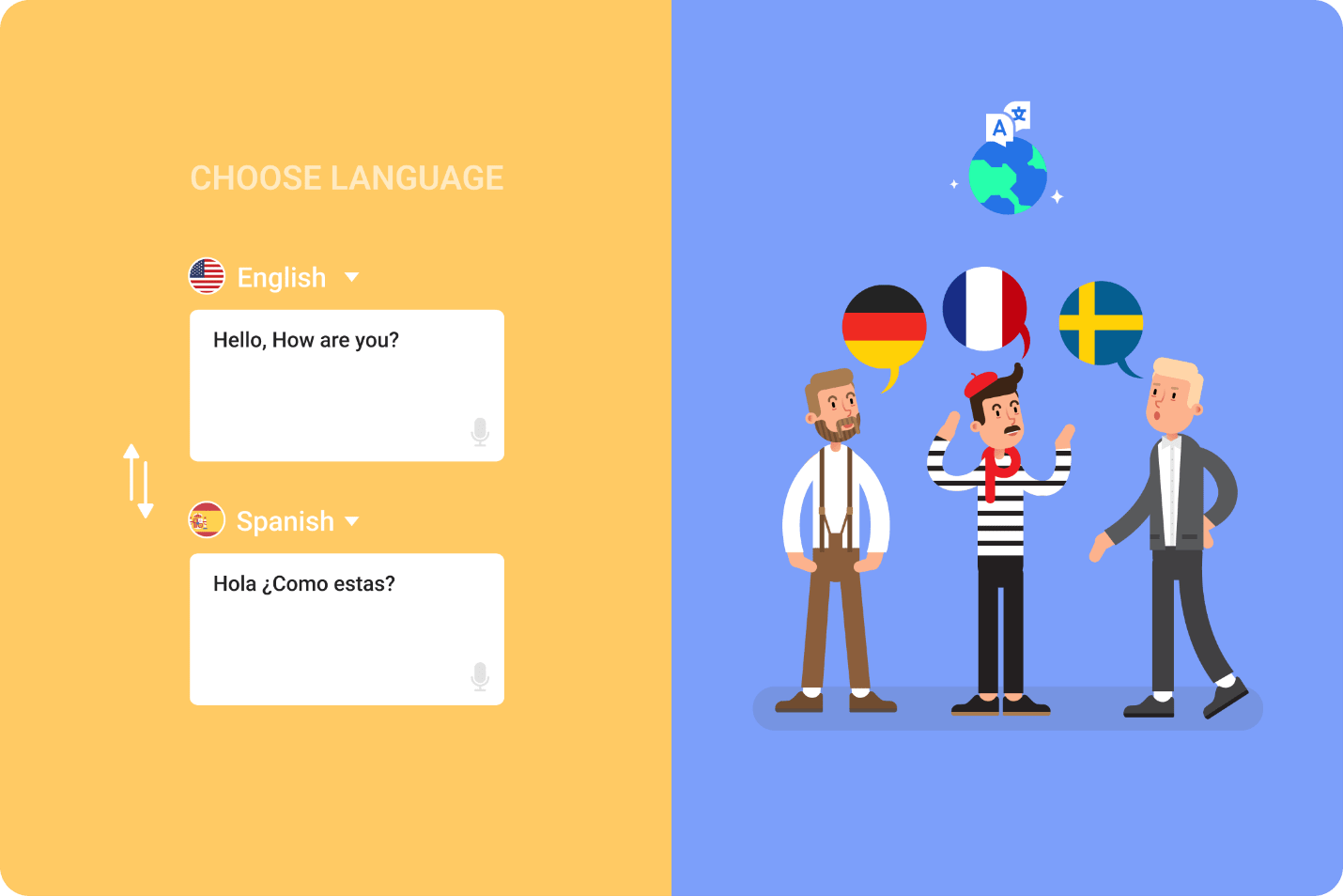What is Localization and How is it Different from Translation?
Want global reach? See why you need localization, not just translation services.
 January 30, 2025
January 30, 2025 8 minute reading
8 minute reading
Say you're a business owner taking the huge leap of making your brand global. You've translated your website and product descriptions to reach more people. You think everything is perfect. But after launching, the results fall short of your expectations. Your target audience isn't interested, and your sales remain flat. So what went wrong?
You missed an important step in your goal: localization.
Simply translating your website, products, and descriptions isn't enough. Localization goes further. It tailors everything—content, visuals, and user experience—to fit your audience's culture and preferences. Essentially, it makes your brand fit naturally into their world.
In this guide, we discuss the benefits of localization, the main differences between translation vs localization, and how to create an effective localization strategy.
What is localization?
Localization, or l10n (a shorthand where the "l" and "n" represent the first and last letters of "localization," and the "10" means the number of letters in between), tailors content, products, or services for a specific audience. It changes various elements, from images to the user experience to make the brand resonate with local expectations.
So, what can you localize, and why does it matter? Here are three key areas:
Software: Software localization is a big market. The global market, including video game adaptations, is expected to reach $15.6 billion by 2032. It adapts elements like date formats, currencies, and interfaces for smooth functionality. For example, Spotify customizes its playlists and interfaces to local cultures. This builds deeper connections with its global listeners.
Marketing content: Crafting content that’s culturally relevant is key to effective localization. Campaigns customized to cultural values and idioms are more impactful. For example, during Diwali in India, brands often run ads celebrating togetherness and light. This amplifies resonance and strengthens engagement with local audiences.
Customer support: Localized support, like local-language help desks, builds trust. It breaks down language barriers and encourages customer loyalty. In Southeast Asia, Super-app Grab offers ride-hailing, food delivery, and digital payments. Moreover, it supports the Filipino, Thai, Bahasa, and Vietnamese languages.
Why invest in localization?
Localization helps your brand connect with new audiences in different countries and expand your market share. Here are three key benefits:
Improved customer experience: Localizing involves adapting content to fit your audience's culture. For example, you can adjust your website for local holidays or offer support in multiple languages. This website localization approach shows customers you value their identity.
Increased market penetration: Adapting to local preferences allows your brand to stand out and resonate with your target market. Campaigns become more impactful when made for a specific cultural context, values, idioms, and preferences. For example, Coca-Cola's “Share a Coke” campaign swapped English names for popular local nicknames in China.
Boosted revenue potential: A localized approach boosts conversion rates and revenue. It does so by connecting with customers organically. For example, eCommerce platforms that offer region-specific payment options like local e-wallets see significant boosts in completed purchases.
Localization helps you deliver an experience that feels natural and familiar to your global audience. Whether you’re adapting product descriptions or multimedia campaigns, these efforts can create deeper connections, strengthen brand loyalty, and drive growth in global markets. On Fiverr, you can find experts who can help customize your content for diverse audiences.
What are the differences between localization and translation?

Gridly
Localization and translation serve distinct purposes. Translation converts words between languages, such as translating English to Arabic. Localization, however, customizes the customer experience to a specific audience. It incorporates elements of transcreation to adapt creative content like slogans or ad campaigns.
Here’s a deeper look at their differences:
While quality translation services provide precise communication, localization creates campaigns native to the target culture. A poor translation can mislead, but localization gets the humor, idioms, and tone right, connecting with the audience.
A good example is a New York Post report on a bottle of pancake syrup with a bizarre warning. It read, "Do not freeze and keep away from tractor and sun."

New York Post
The mistranslation occurred when the Arabic word for "heat" (حرارة) was mistakenly rendered as "tractor" (جرارة). The company could've avoided this mishap by using accurate translations combined with cultural references.
Find a Localization Expert for Hire
What are the types of localization?
Localization can be divided into two key types: light localization and full localization. Each has unique applications depending on the level of adaptation required for a particular market.
Light localization
Light localization focuses on simple, cost-effective adjustments that make content accessible to a new audience. This includes:
Text adaptation: Translating or rephrasing content to match the language and tone of the target audience.
Menus and navigation: Ensuring clear, intuitive layouts for local users.
Adapting error messages: Replacing technical terms with simple, friendly wording in the target language.
Customizing placeholders in forms: Placeholder text, such as "Input your phone number," can be adapted to include region-specific formats (ex., +353 for Ireland or +33 for French users).
Currency updates: Displaying local currencies to build trust and simplify transactions.
For example, localizing chatbot interactions to reflect cultural norms and communication styles enhances user experience. Chatbots in Japan might adopt a more formal tone and use honorifics (titles or suffixes added to names to convey respect, such as "-san" or "-sama"). In the US, a casual and friendly approach may be preferred. Businesses can use tools and services like AI content editing and AI writing to quickly optimize the chatbot’s style and tone for local standards.

Lokalise
Full localization
Full localization adapts content for a culturally immersive experience. This involves:
Language and tone: Adjusting messaging to cater to cultural differences, such as formal vs. casual tones. For example, adopting an American style of direct and concise communication when targeting US audiences. Another example is using Chinese idioms and expressions to better connect with Chinese-speaking audiences.
Visual elements and semiotics: Changing images, symbols, and colors to resonate with the target culture. For example, in South Korea, white is associated with mourning. As such, avoiding white-themed packaging for celebratory products is critical.
Seasonal campaigns: Customizing promotions to resonate with local holidays and cultural events. For example, localizing events for Lunar New Year, where red and gold are used extensively to symbolize good fortune.
Regulatory compliance: Adjusting terms and policies to adhere to local data protection laws. For example, the Lei Geral de Proteção de Dados in Brazil sets specific rules for handling citizens' data.
Payment methods: Including local payment options like e-wallets or cash on delivery to increase conversions.
A real-life successful full localization example is Mercado Pago. This fintech app, popular in Latin America, exemplifies full localization by tailoring its payment systems to each country it operates in. It integrates region-specific options like Boleto Bancário in Brazil, local credit card formats in Argentina, and QR-code payments in Mexico.
These adaptations ensure seamless usability and foster trust among local users. Assistance from local advisors helped the company navigate complex cultural expectations and ensure a successful market entry.
How to create a localization strategy
For a successful localization, you need a well-defined strategy:
1. Hire a localization specialist
A CSA Research study found that 73% of online shoppers prefer product reviews in their native language. This highlights the need for professional localization services. Yes, many translation apps exist. However, nothing beats a human expert.
An expert understands the ins and outs of the localization process. They grasp nuances and specificities that even an advanced tool can’t duplicate. On Fiverr, you can discover verified localization pros who can analyze your target audiences, pinpoint the cultural nuances needed, and do the actual adaptation.
Professional work and quality assurance processes go hand-in-hand. Working with one of our pros guarantees an efficient workflow and clear communication throughout the project. Ultimately, this saves you time and resources while delivering high-quality output.
2. Choose your market
Finding the right market for your localization strategy is vital to increasing your market share and achieving long-term success. A localization pro with expertise in AI-powered tools can monitor and evaluate social media chatter, shopping trends, and local search habits. Experts can help you uncover untapped markets or fields with the best growth opportunities. They can then combine the acquired data with cultural insights to choose the best market with the highest growth potential.
For example, a skincare brand wanting to penetrate East Asia may choose the Japanese market as a starting point based on trend data and regional preferences. Japan is a good choice as personalized skin and beauty regimens are highly valued in the country.
3. Audit your content
Before making any changes, do an in-depth audit of your existing content to see what specific elements you need to adapt during the localization process. This is particularly helpful when adapting to a new language. Localization experts on Fiverr can do the evaluation to help you prioritize, save costs, and guarantee the most impactful adaptation.
Start categorizing these areas and identify the metrics most relevant to your localization goals:
Websites: Review your homepage, landing pages, user interface, and all other parts of the site. Check whether the copy and visuals will connect with your target audience once localized.
Product descriptions: Make sure all descriptions are clear, culturally relevant, and have the appropriate tone. Sometimes, a playful tone in English requires a more formal tone in another language.
SEO elements: Implement local SEO and local search behaviors to improve visibility in new regions.
Multimedia content: Make sure all videos, images, graphics, subtitles, and voiceovers match the audience’s language and humor.
Marketing campaigns: Check your marketing materials, such as ads, social posts, and emails, for language and cultural references that won't translate.
4. Assemble your team
Unbabel reported that localization positively impacted revenue growth for 84% of marketers. Meanwhile, 85% saw better customer acquisition with localization. This highlights the need for a team that can effectively localize all aspects of your brand. A team must have:
Native-speaking translators: Hire professional translators for each target language to maintain linguistic accuracy. On Fiverr, you can search by language category, such as website content or product descriptions.
Cultural consultants: Local advisors can guide your content to align with cultural norms and preferences.
5. Implement and test
Implementation and testing go beyond traditional methods like focus groups. Innovative testing tools like Crazy Egg or Hotjar provide insights into user behavior through heatmaps and session recordings. They help refine your localized content and optimize your workflow.
Testing includes:
A/B testing localized content to identify what resonates most.
Verifying visuals, payment systems, and regulatory compliance.
Gathering feedback from local users to ensure cultural relevance.
Netflix is a leading example of how continuous testing improves localized user experiences. The platform doesn’t just translate content. It modifies recommendations, subtitles, and even cover art based on regional preferences.
Hire localization pros on Fiverr today
Deciding to take on the international market is a big step. And going the DIY route can only do so much. Localization has many moving parts, so partnering with a pro can help you streamline and speed up the process.
Fiverr is the marketplace where you can find verified and experienced localization experts to help tailor your content for a global audience. We offer a flexible alternative to traditional translation agencies.
With flexible project sizes and a variety of language pairs available, you can find a pro to localize your web content, informative articles, or ad copy. From linguists to cultural consultants, Fiverr connects you with experts who understand how to localize content effectively.
You’ll benefit from direct communication with experts, competitive pricing, and rigorous quality assurance processes. Use Fiverr's intuitive search to find the right expert for your project while staying within your budget.
Localization FAQs
What do we mean by localization?
Localization means making market-specific adjustments to your content, products, or services. It requires modification to meet the needs of your target audience relating to the following:
Language
Culture
Preferences
Expectations
What are examples of localization?
Localization examples include:
Translating a website into multiple languages
Adjusting payment methods to match local preferences
Modifying visuals and color schemes to align with cultural norms
Offering FAQs that are region-specific
What are the two types of localization?
The two types are light localization and full localization. With light localization, you make simple adjustments to make your content accessible to a specific market. Full localization, on the other hand, involves fully tailored modifications to ensure a seamless user experience.
What is the localization of culture?
Localization of culture means adapting your business to your target audience's customs, values, and traditions. It should align with their preferences and expectations. This makes your brand or product feel familiar and relevant.



